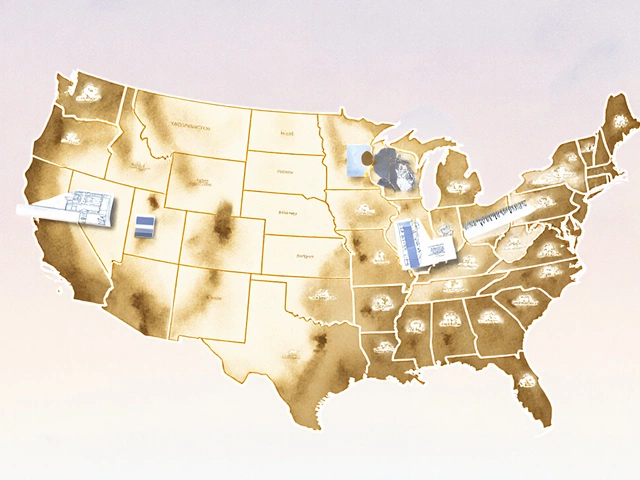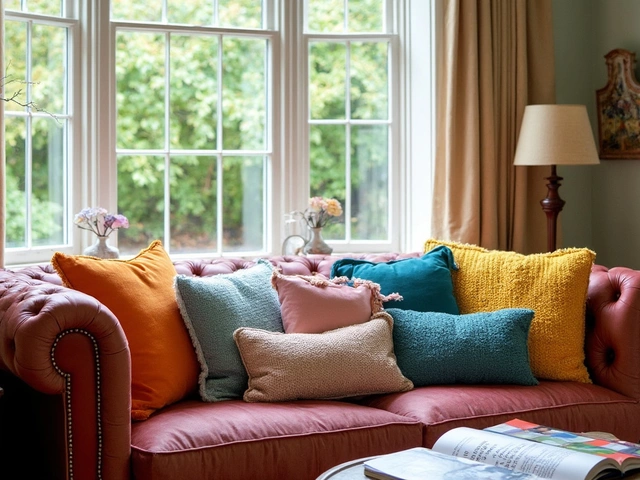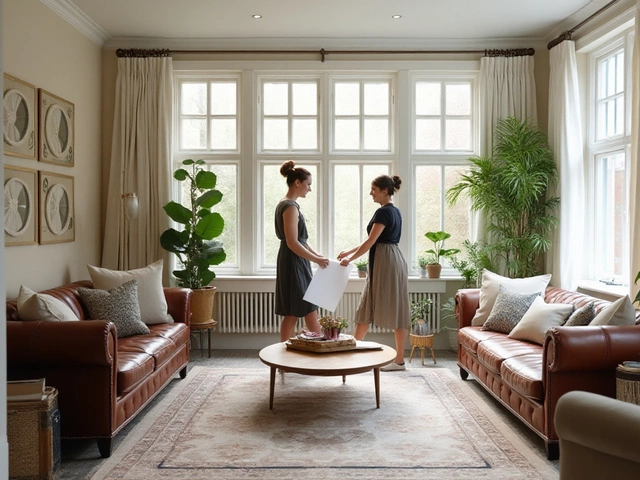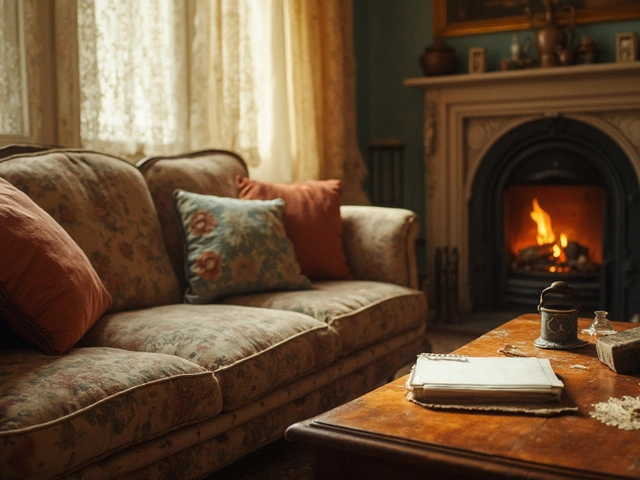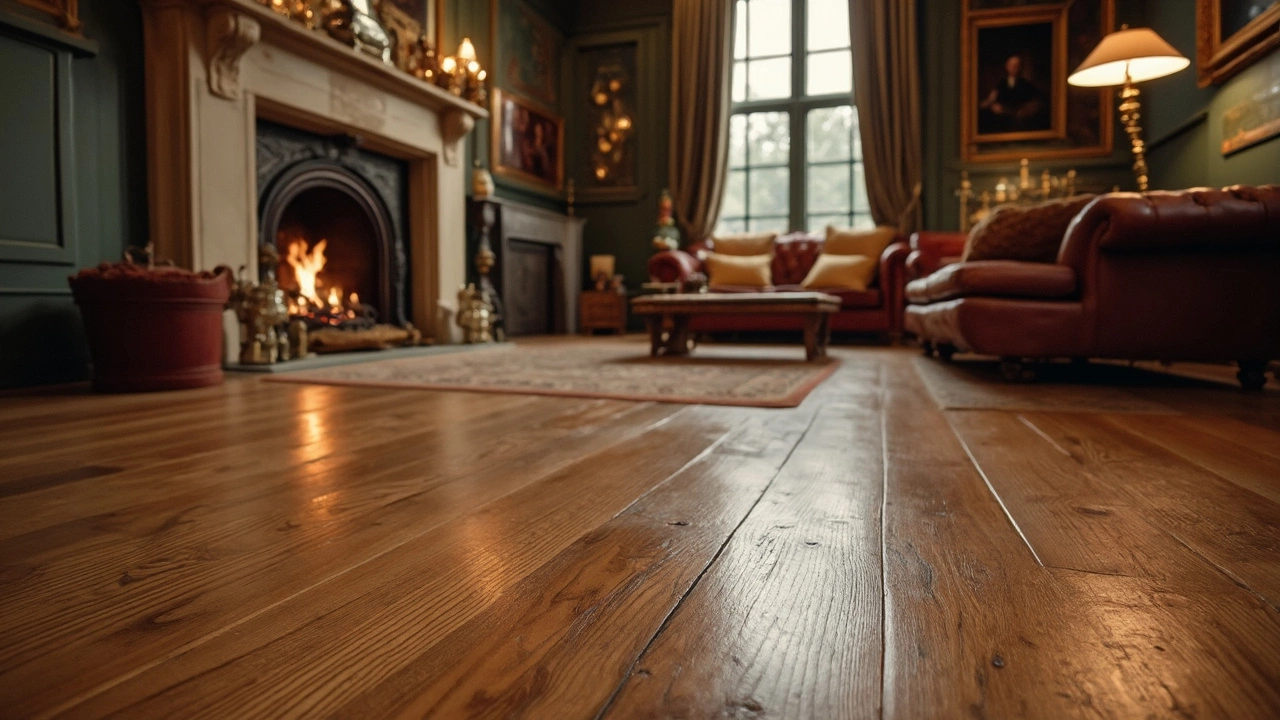
So, you're working on a new build and the time has come to pick out the flooring. But where to start? It's a big decision, and the options might seem endless. Flooring isn't just about looks; it's about durability, maintenance, and even the mood of your home. Let's break it down to make it easier to choose what's best for you.
First up, think about where the flooring will go. High-traffic areas like hallways and entryways need something tough and long-lasting. Living rooms and bedrooms? You might want something comfy underfoot, like carpet. Kitchens and bathrooms call for something easy to clean, probably tile or vinyl. Knowing your needs narrows the choices down a bit.
Next, consider the style and feel of your new build. Are you going for sleek and modern, or cozy and rustic? Hardwood might be your best friend for that classic touch, while laminate can mimic wood or stone without the heavy price tag. Tiles bring in a world of design possibilities – from chic patterns to bold colors.
- Factors to Consider in Flooring
- Hardwood: A Timeless Choice
- Laminate: Affordable and Stylish
- Tile: Durable and Versatile
- Carpet: Comfort and Warmth
- Eco-friendly and Trendy Options
Factors to Consider in Flooring
Picking the best flooring for your new build can be quite a challenge with all the options out there. So, where do you start? Knowing what factors to consider can help you make a more informed choice.
1. Durability
Your flooring needs to stand up to the test of time. Think about how much foot traffic there will be. Areas like kitchens and hallways generally see a lot of movement, so you'll want something robust like tile or hardwood. In contrast, bedrooms might do well with something softer like carpet.
2. Maintenance
How often are you willing to clean and maintain your floors? Some materials need more upkeep than others. Tile and laminate are generally easy to clean, often just needing a regular sweep and mop. Hardwood may require more care to keep it looking its best.
3. Budget
Your budget is going to set some boundaries for your choices. While hardwood is beautiful, it’s usually on the pricier side. Laminate and vinyl can provide a similar look without breaking the bank. Be sure to price out not just the material but also the installation.
4. Style and Aesthetic
What look are you going for in your home? Flooring can set the tone for the entire room. If you want a modern vibe, polished concrete could be the way to go. For something more traditional, you might go with hardwood for that warm, classic feel.
5. Environmental Impact
More people are looking for eco-friendly flooring options these days. Bamboo and cork are both sustainable options that don’t sacrifice style or durability. Do a bit of research to find out how different materials impact the environment.
| Type | Average Lifespan (years) |
|---|---|
| Hardwood | 20-100 |
| Laminate | 15-25 |
| Tile | 20-50 |
| Carpet | 5-15 |
| Vinyl | 10-20 |
6. Installation and Timing
Some types of flooring are easier and quicker to install than others. If you're on a tight schedule, or if you're hoping to save on labor costs by doing it yourself, simpler options like laminate or vinyl might be best. Don't forget to account for acclimation periods and any additional prep work required for particular materials.
Hardwood: A Timeless Choice
Ah, the classic elegance of hardwood flooring. It's been a favorite for centuries, and for good reason. There's something about those rich grains and warm tones that just never goes out of style.
The Appeal of Hardwood
The main allure of hardwood is its natural beauty and character. Each plank is unique, adding depth and personality to your new build. It's a great pick if you're aiming for a high-end look. Plus, hardwood can adapt to almost any design theme, from traditional to modern.
Durability and Maintenance
Let's talk toughness. Hardwood is known for its longevity – we’re talking decades if you take care of it properly. A good sealant goes a long way in protecting against scratches and stains. And while it might seem high-maintenance, a regular sweep and mop keeps it looking tip-top.
Types of Hardwood
When it comes to options, you've got plenty. Oak, maple, cherry, and walnut are popular choices, each with their own distinct look. Think about the tone you want for your space: lighter woods can make a room feel bigger, while darker shades add a cozy vibe.
Investment and Value
Sure, hardwood flooring can be pricey, but it's an investment that pays back. Not only does it typically increase the value of your home, but it also ages gracefully, developing a patina that many appreciate.
| Type | Average Cost per Square Meter | Durability Rating |
|---|---|---|
| Oak | $80 - $120 | High |
| Maple | $90 - $130 | Medium-High |
| Cherry | $100 - $140 | Medium |
| Walnut | $95 - $135 | High |
Eco-Friendly Options
If sustainability is on your mind, look into reclaimed or responsibly sourced timber. These options can significantly reduce your environmental footprint while keeping your new build stylish.
In short, if you want a flooring choice that's classy, durable, and a solid investment, hardwood might just be your best bet. But remember, it's about what fits your lifestyle and taste.
Laminate: Affordable and Stylish
If you're looking to keep the budget in check without compromising on style, laminate flooring could be your new best friend. What's great about it? It mimics the look of hardwood or stone, but doesn't come with the same price tag. Perfect for those of us wanting elegance without the extra cost.
Laminate flooring is composed of several layers that make it pretty robust. The top layer is a clear protective sheet, followed by a photographic layer where the magic happens—this is what imitates the look of wood or stone. Underneath is a dense core board providing stability, and finally, a backing layer for extra balance.
Why Choose Laminate?
- Durability: Thanks to its sturdy build, laminate can withstand daily wear and tear, making it great for homes with kids and pets.
- Easy Maintenance: Spills wipe away easily, and you won't need special cleaners. Just a regular sweep and mop to keep it sparkling.
- DIY Installation: Many laminate options come with a click-lock design, making it a popular choice for DIY enthusiasts. If you're handy, you could lay the floor yourself over a weekend.
Considerations
While laminate is quite versatile, it does have a few limitations. It's not the best pick for areas with high moisture, like bathrooms, since excessive water can cause the layers to warp over time. Also, if you're all about the feel of real wood underfoot, you might miss that natural touch.
Overall, the pros of going with laminate flooring are impressive, especially if style on a budget is your aim. With tons of designs to choose from, you get flexibility in matching your new build's look without sacrificing durability.
| Type | Estimated Cost per Square Meter |
|---|---|
| Basic Laminate | $20 - $30 |
| Designer Laminate | $40 - $60 |
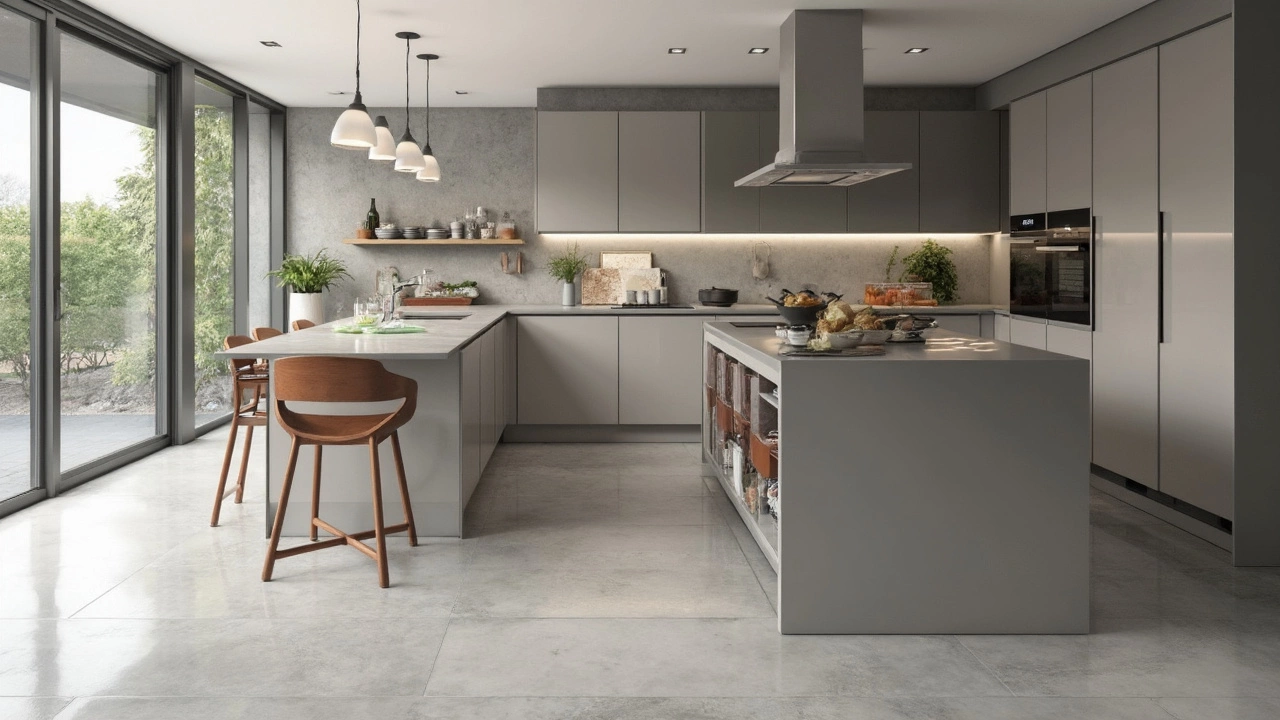
Tile: Durable and Versatile
Thinking about tile flooring for your new build? Good choice! Tile has always been a popular pick because of its resilience and versatility. It's perfect for areas where spills and splashes are common, like kitchens and bathrooms.
The Strength of Tile
One of the main reasons folks opt for tile is its durability. Ceramic and porcelain tiles, for instance, are tough as nails. They're built to last and can withstand heavy foot traffic without a fuss. This makes them ideal for busy households or those who just prefer less maintenance.
Design Options Galore
When it comes to design, tiles are a bit like a kid in a candy store—so many choices! You can go for plain tiles or something with vibrant patterns. Feeling modern? Glass or metallic tiles might be your thing. And if you're after that natural stone feel but without the cost, ceramic tiles can mimic those looks quite well.
Installation and Maintenance
Tiles are not only hard-wearing but also pretty low maintenance. A quick sweep or mop is enough to keep them looking spick and span. Installation can be a DIY project, but it often pays to have a pro do it, ensuring those tiles are laid just right.
For guidelines on tiles in wet areas, controlling the grout choices can dramatically impact the final look and ease of cleaning. Choose darker grout to disguise stains, or keep it light for a seamless look.
Some Handy Tile Facts
- Ceramic tiles have been used for centuries dating back to ancient Egypt—so you're getting a piece of history!
- Porcelain tiles, which are denser, are great for both indoor and outdoor use.
- Eco-friendly options are available too. Recycled tiles are a sustainable choice for those keen on going green.
| Type of Tile | Best for |
|---|---|
| Ceramic | Indoor use, budget-friendly |
| Porcelain | High-traffic areas, indoor or outdoor |
| Glass | Backsplashes, modern look |
So, if you want flooring that's as tough as it is attractive, tiles might just be the answer for your new build. They're about as versatile as you can get, which means you can play with styles and looks without compromising on quality.
Carpet: Comfort and Warmth
When you think of carpet, comfort and warmth often come to mind. It's the go-to flooring option for those who love the cozy feel underfoot, especially in living rooms and bedrooms. Who doesn't enjoy sitting or even lying on a soft carpet during those relaxed nights?
Carpet provides excellent insulation, making it ideal for cooler climates or spaces like basements. It's a champion at reducing noise levels too, absorbing sound far better than hard flooring. Got kids? Carpet is also forgiving on tumbles.
"Carpet can dramatically change the aesthetic experience within a space, providing warmth not only to the feet but also to the overall environment." - The Flooring Institute
But what kinds of carpet should you consider for your new build? Here's a breakdown of popular options:
- Nylon: Durable and stain-resistant, making it perfect for high-traffic areas.
- Polyester: Offers bright colors and is made from recycled materials, so it's eco-friendly too.
- Wool: Natural and long-lasting. It's a bit pricier but offers luxury and warmth.
Maintenance is key to extending the life of your new carpet. Regular vacuuming is a must, and it's a good idea to deep clean every year. Carpet is not perfect—it is known to harbor allergens, so it's worth considering if allergies are a concern in your household.
Consider Room Usage
Placement matters. You might love the idea of carpet in the kitchen or bathroom, but its ability to absorb moisture can be a drawback in such spaces. Keep carpet to areas where spills are less likely.
New Trends
Believe it or not, carpet is trendy again. You can now find carpets in lively patterns and textures that were once the realm of rugs. Consider using carpets to make your flooring pop.
| Type | Durability | Cost |
|---|---|---|
| Nylon | High | $$ |
| Polyester | Medium | $ |
| Wool | Very High | $$$ |
In the end, choosing carpet comes down to personal preference and lifestyle needs. Whether you're going for warmth and coziness, or a splash of style, there's likely a carpet out there that'll suit your new build perfectly.
Eco-friendly and Trendy Options
Let's face it, adopting sustainable practices isn't just about being kind to the planet; it can also lend your new home a fresh, trendy vibe. While you’re considering flooring for your new build, going green never looked so good.
First things first, bamboo is not just for pandas. It's actually a highly sustainable flooring choice! Bamboo grows super fast—up to 91 cm in a single day—making it a renewable option for modern homes. It’s tough too, often standing up better to wear and tear than traditional hardwood.
Another great option is cork flooring. If you like something cushy and quiet underfoot, cork's your mate. The trees aren't cut down when harvested, which makes it a top eco-friendly pick. Plus, it's naturally antimicrobial, which is a neat bonus if you have kids or pets running around.
Recycled Materials
Recycling isn’t just for plastic bottles. Reclaimed wood or recycled tiles are a fab way to add character to your space while doing a bit of good for the planet. Floors made from reclaimed materials can give your home a unique story, and they often come with an aged, rustic look that’s right on trend.
Linoleum vs Vinyl
When it comes to sheet flooring, linoleum is worth looking at. Although often confused with vinyl, linoleum is made from natural materials like linseed oil, making it biodegradable. It’s not just about the environment here; linoleum can be surprisingly stylish too, with a range of modern designs available.
Trendy Eco-Friendly Tip
Think about combining different textures and materials in your home flooring. Mixing bamboo with a splash of recycled tiles or sections of cork can give your home a distinct and stylish edge.
| Material | Average Lifespan (Years) | Eco-friendliness |
|---|---|---|
| Bamboo | 20-25 | High |
| Cork | 15-30 | High |
| Reclaimed Wood | 30-40 | High |
| Linoleum | 20-40 | High |
Get stuck into the world of eco-friendly flooring to find something that’s as good for your conscience as it is for your style.
